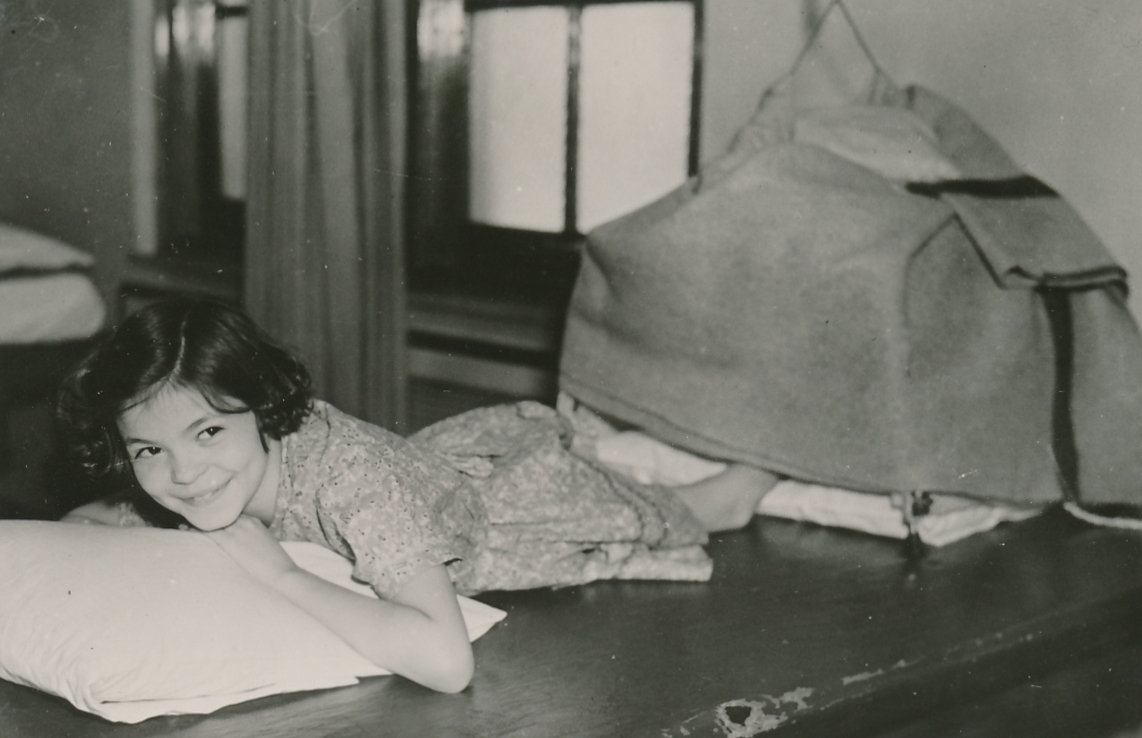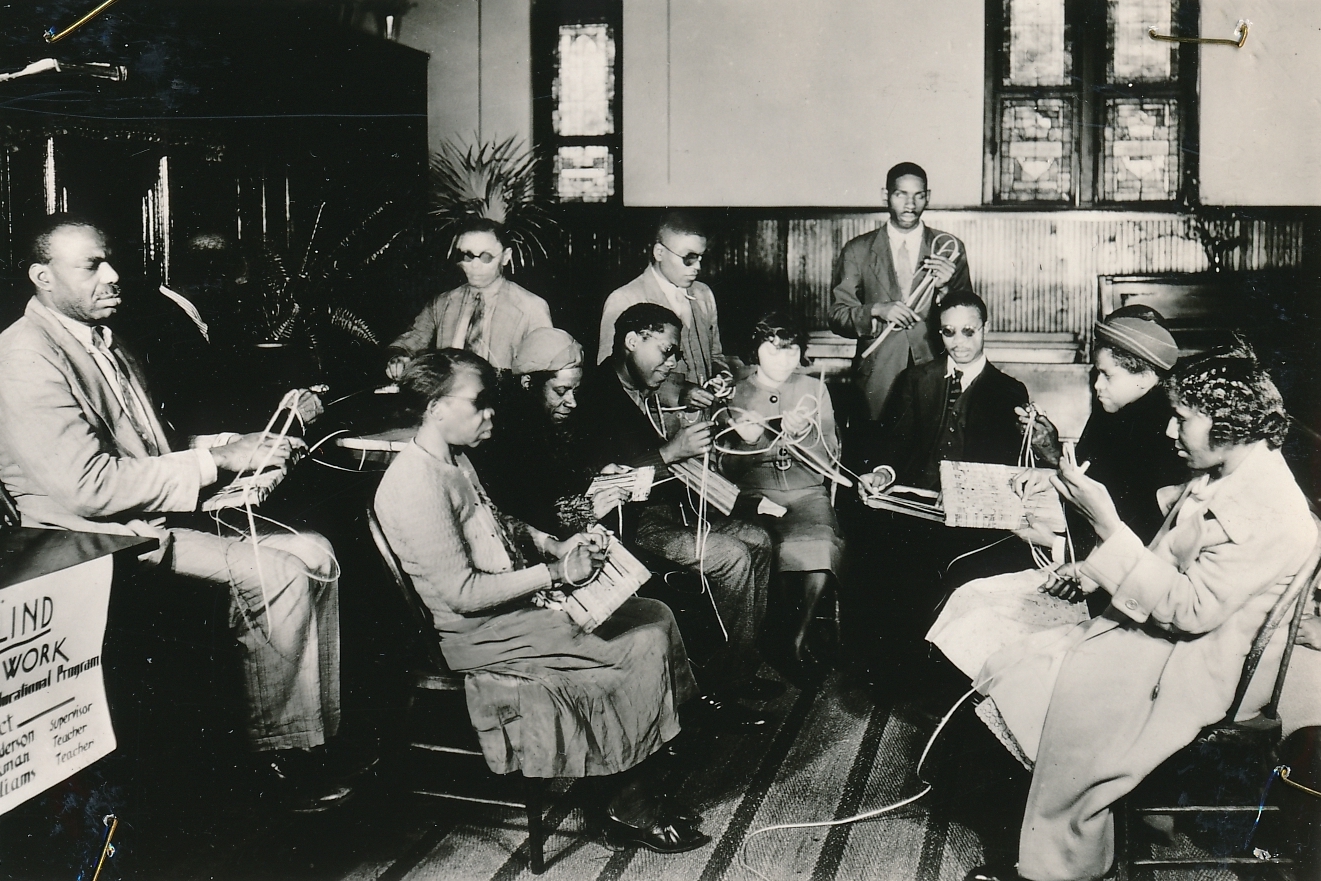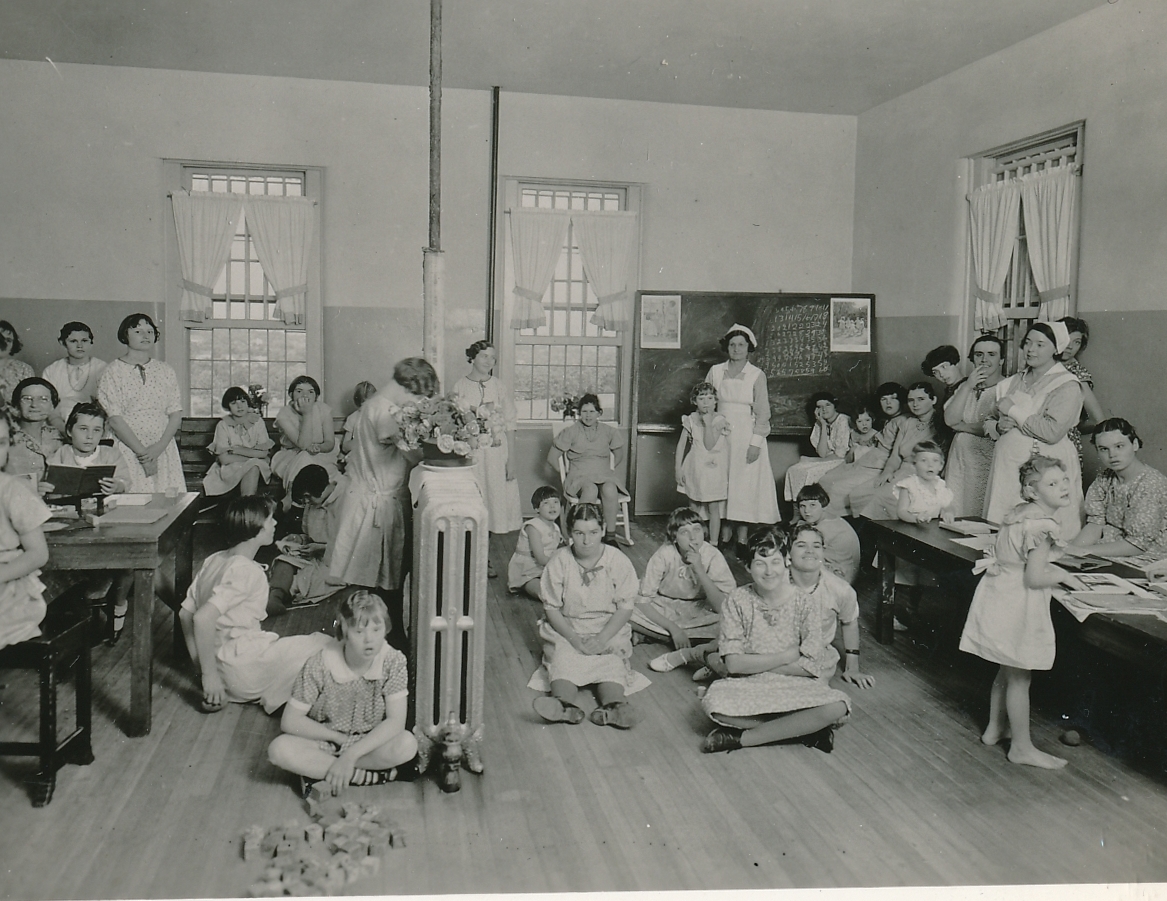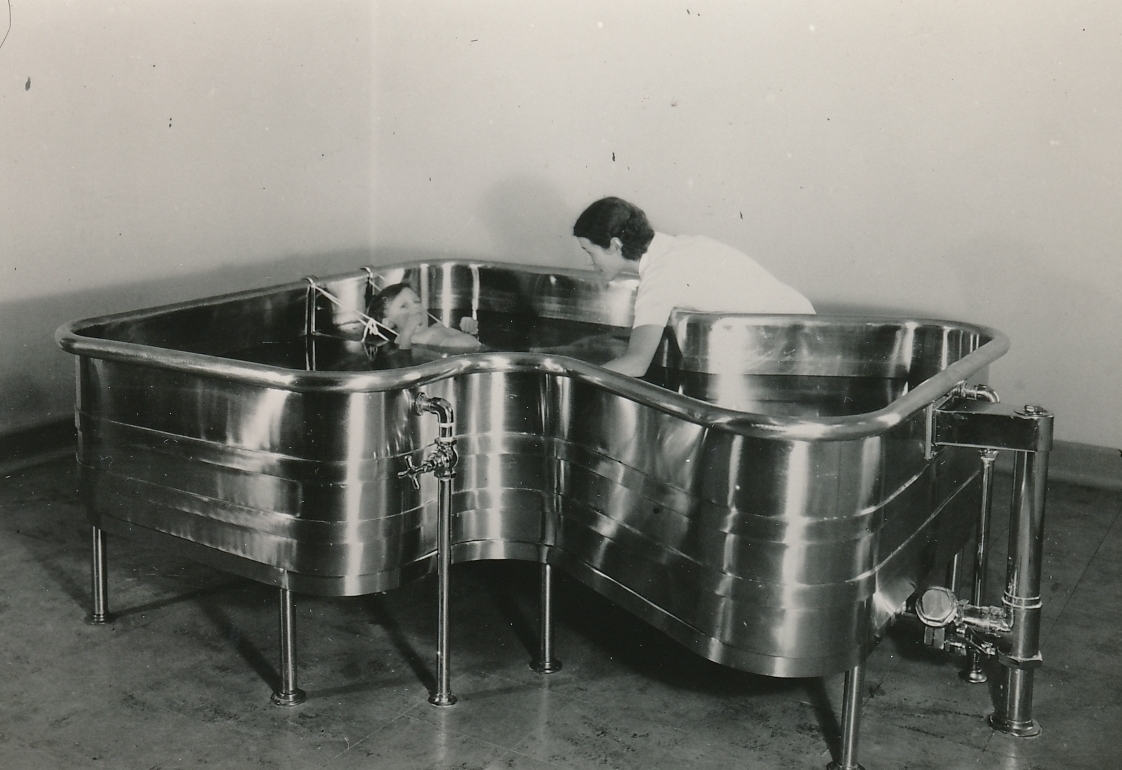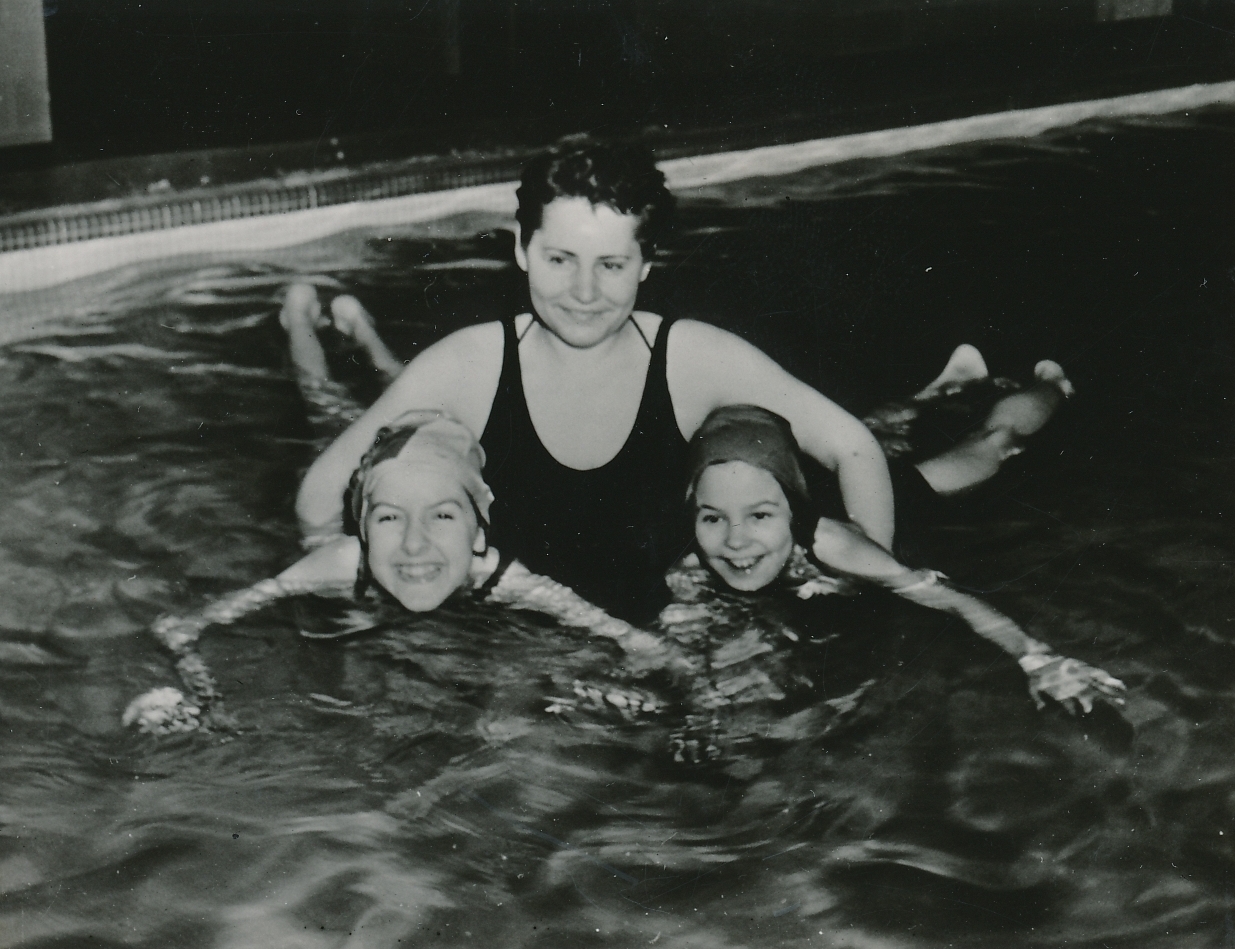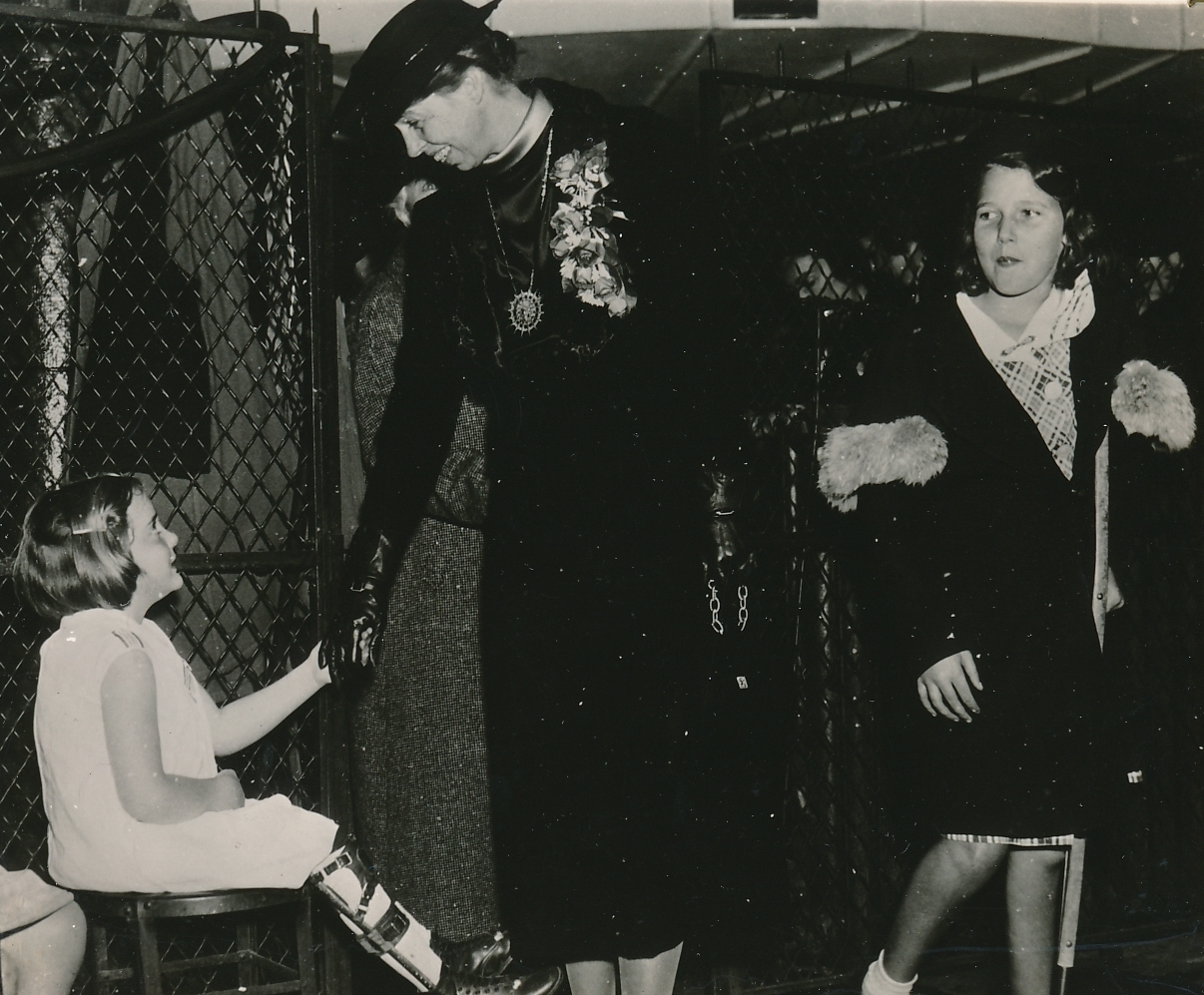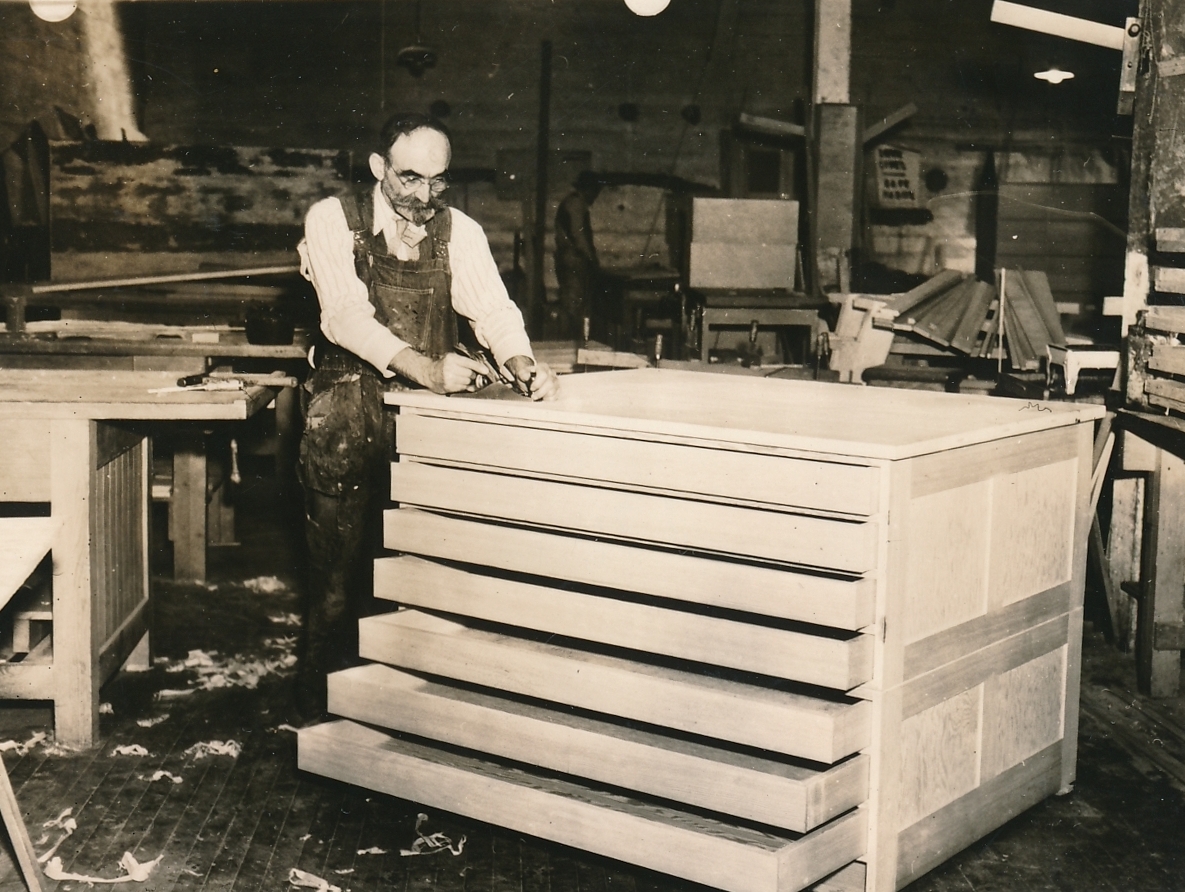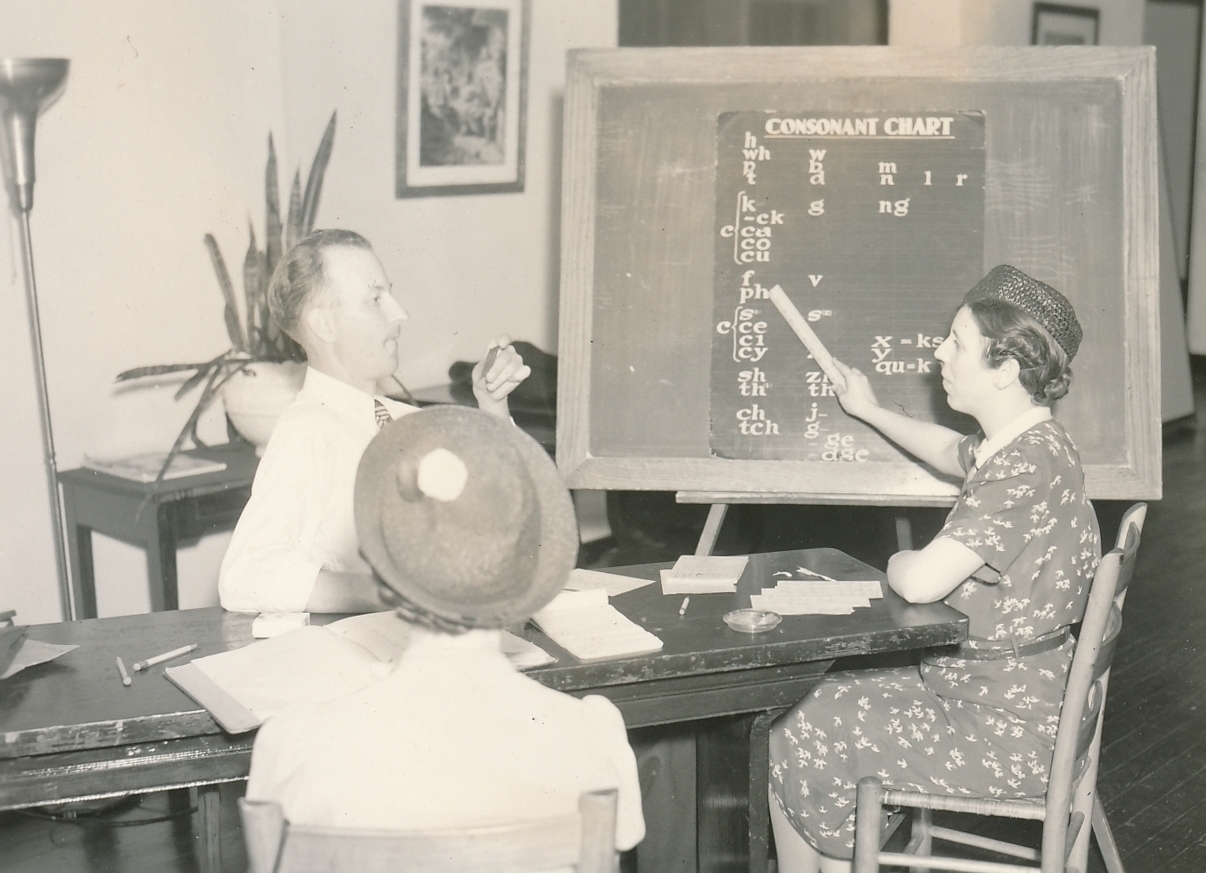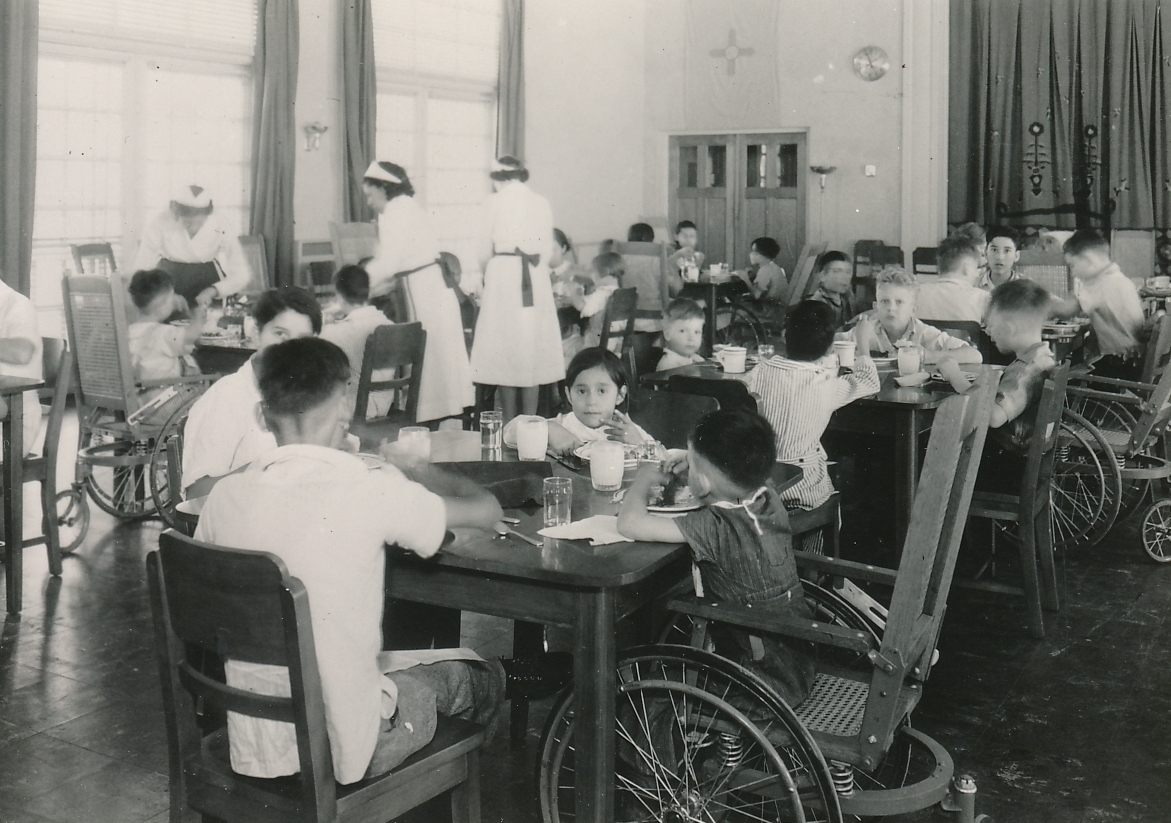- Home
- /
- Racism and Beyond: A...
- /
- A New Deal For...
- /
- Disabled Americans and the...
Disabled Americans and the New Deal
Scroll down for our photo gallery below!
Disabled Americans benefited greatly from the New Deal, which featured the first major federal efforts to aid ordinary citizens with physical and mental challenges – over fifty years before the Americans with Disabilities Act [1]. Assistance to the disabled included specialized health facilities; therapeutic services; education, training, and work opportunities; art and music instruction; and the legal, ethical and administrative building blocks for federal disability insurance and the Supplemental Security Income program.
Between 1933 and 1943, thousands of New Deal works projects were directed at building, expanding, improving, and staffing disabled services [2]. Some of the facilities for the disabled were among the most elegant public works built in that era, as in the case of the Sunshine School for Crippled (sic) Children in San Francisco and the old State Hospital in Camarillo, California, for people with mental health problems (now part of California State University, Channel Islands). Works Progress Administration (WPA) programs provided many specialized services for the disabled, including physical therapy, art therapy, haircuts, transportation, and education programs for those who could not attend school. The WPA photographic record at the National Archives shows a significant number of programs designed for Americans with special needs, such as children with infantile paralysis and those suffering from mental illness [3].
The New Deal was an especially transformative period for blind Americans. WPA workers transcribed books into Braille and also created “talking books” to play on records [4]. Blind Americans found employment in the WPA, where they received instruction in various crafts, trades, and occupations. Meanwhile, the Public Works Administration (PWA) provided funding for special education facilities, such as the elementary school building on the campus of the Romney School for the Deaf and Blind, in Romney, West Virginia. It is one of several such facilities still in use today [5].
As for work-relief employment of disabled Americans, the WPA “made it clear from the beginning that physically handicapped persons who might be employed without danger to themselves or others were not to be disqualified per se as unemployable” [6]. However, state and local actions could thwart this policy [7], and some in the disabled community argued that they did not receive their fair share of jobs. During a contentious meeting with Harry Hopkins in 1936, a group of disabled workers from New York City argued that there were thousands of disabled ready to work but only a few hundred jobs available. Hopkins replied, “It’s worth looking into. If your facts are correct… you have had an unfair deal from WPA” [8].
In 1956, with overwhelming bipartisan support, the Social Security Act was amended to include disability insurance [9]. Republican President Dwight Eisenhower signed the legislation on August 1, 1956, and the 1956 Republican Party Platform cheered the overall expansion of Social Security [10]. The amendment “represented the historic culmination of an effort by Social Security planners that began in the 1930s” [11]. Initially, only workers aged 50-64 were covered by disability insurance, but federal policy expanded greatly over the coming decades. The Supplemental Security Income program, administered by the Social Security Administration, was created in the early 1970s to cover a much broader range of disabled Americans [12].
Sources: (1) Previous aid was mostly confined to injured war veterans. See, e.g., “A Brief History of the Disability Rights Movement,” Anti-Defamation League (accessed June 16, 2018) (2) See, e.g., Federal Works Agency, Final Report on the WPA Program, 1935-43, Washington, DC: U.S. Government Printing Office, 1946, pp. 131, 133, and Public Works Administration, America Builds: The Record of PWA, Washington, DC: U.S. Government Printing Office, 1939, pp. 141-155, 269. (3) See the photo gallery that attends this summary. (4) See, e.g., “History,” National Library Service for the Blind and Physically Handicapped, Library of Congress (accessed April 10, 2018). (5) “Elementary School Building – Romney, WV,” Living New Deal (accessed April 10, 2018). (6) Donald S. Howard, The WPA and Federal Relief Policy, New York: Russell Sage Foundation, 1943, p. 463. (7) Ibid., p. 464. (8) “Hopkins Walks Out On Cripples After More Jobs,” Chicago Tribune, May 12, 1936 (despite the sensational headline, the article notes that Hopkins left “to keep another engagement”). (9) “1956 Amendments,” Social Security Administration (accessed April 10, 2018). (10) Ibid., and also see “Republican Party Platform of 1956,” The American Presidency Project, University of California Santa Barbara (accessed April 10, 2018). (11) John R. Kearney, “Social Security and the “D” in OASDI: The History of a Federal Program Insuring Earners Against Disability,” Social Security Bulletin, Vol. 66, No. 3, 2005/2006 (emphasis added). (12) “Supplemental Security Income Program Description and Legislative History,” Social Security Administration, Annual Statistical Supplement, 2012 (accessed April 10, 2018).








